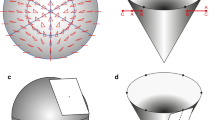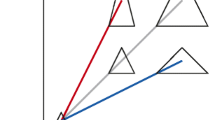Abstract
Describing postures has always been a central concern when studying behaviour. However, attempts to compare postures objectively at phylogenetical, populational, inter- or intra-individual levels generally either rely upon a few key elements or remain highly subjective. Here, we propose a novel approach, based on well-established geometric morphometrics, to describe and to analyse postures globally (i.e. considering the animal’s body posture in its entirety rather than focusing only on a few salient elements, such as head or tail position). Geometric morphometrics is concerned with describing and comparing variation and changes in the form (size and shape) of organisms using the coordinates of a series of homologous landmarks (i.e. positioned in relation to skeletal or muscular cues that are the same for different species for every variety of form and function and that have derived from a common ancestor, i.e. they have a common evolutionary ancestry, e.g. neck, wings, flipper/hand). We applied this approach to horses, using global postures (1) to characterise behaviours that correspond to different arousal levels, (2) to test potential impact of environmental changes on postures. Our application of geometric morphometrics to horse postures showed that this method can be used to characterise behavioural categories, to evaluate the impact of environmental factors (here human actions) and to compare individuals and groups. Beyond its application to horses, this promising approach could be applied to all questions involving the analysis of postures (evolution of displays, expression of emotions, stress and welfare, behavioural repertoires…) and could lead to a whole new line of research.




Similar content being viewed by others
References
Adams DC, Rohlf FJ, Slice DE (2004) Geometric morphometrics: ten years of progress following the revolution. Ital J Zool 71:5–16
Baerends G (1972) Le rôle de l’éthologie dans l’étude causale du comportement. In: Problèmes de méthodes en psychologie comparée. Coll Int Liège. pp. 11–28
Baerends G, van der Cingel N (1962) On the phylogenetic origin of the Snap display in the common heron Ardea cinerea. Symp Zool Soc Lond 8:7–24
Beerda B, Schilder MBH, van Hooff J, De Vries HW, Mol JA (1999) Chronic stress in dogs subjected to social and spatial restriction. I. Behavioral responses. Physiol Behav 66:233–242. doi:10.1016/S0031-9384(98)00289-3
Biau S, Barrey E (2004) The trot characteristics during the first years of dressage training. Pferdeheilkunde 20(2):135–139
Bookstein FL (1997) Landmark methods for forms without landmarks: morphometrics of group differences in outline shape. Med Amage Anal 1:225–243. doi:10.1016/S1361-8415(97)85012-8
Bruner E, Bartolino V (2008) Morphological variation in the seahorse vertebral system. Int J Morphol 26(2):247–262
Bruner E, Mantini S, Guerrini V, Ciccarelli A, Giombini A, Borrione P, Pigozzi F, Ripani M (2009) Preliminary shape analysis of the outline of the baropodometric foot: patterns of covariation, allometry, sex and age differences, and loading variations. J Sport Med Phys Fit 49(3):246–254
Cauvin E (1997) Assessment of back pain in horses. Equine pract 19:522–533
Cooper JJ, Mc Call N, Johnson S, Davidson HPB (2005) The short-term effects of increasing meal frequency on stereotypic behaviour of stabled horses. Appl Anim Behav Sci 90:351–364
Darwin C (1872) L’expression des émotions chez l’homme et les animaux, Deuxième édition française revue et, corrigéeth edn. Comité des travaux historiques et scientifiques, Paris
Faber M, Schamhardt H, van Weeren R, Johnston C, Roepstorff L, Barneveld A (2000) Basic three-dimensional kinematics of the vertebral column of horses walking on a treadmill. Am J Vet Res 61:399–406
Frere J (1998) Le bestiaire de Platon. Editions Kime, Paris
Fureix C, Menguy H, Hausberger M (2010) Partners with bad temper: reject ou cure? A study of chronic pain and aggression in horses. PLoS ONE 5(8):e12434. doi:10.1371/journal.pone.0012434
Gunz P, Mitteroecker P, Bookstein FL (2005) Semilandmarks in three dimensions. In: Slice DE (ed) Modern morphometrics in physical anthropology. Kluwer Press, New York, pp 73–98
Guyomarc’h J-C, Saint Jalme M, Hemon YA (1987) Sauver la caille des blés? C’est possible. Bull Mens Off Natl Chass 114:13–18
Hama H, Yogo M, Matsuyama Y (1996) Effects of stroking horses on both humans’ and horses’ heart rate responses. Jpn Psychol Res 38:66–73
Haussler KK, Erb HN (2006) Pressure algometry for the detection of induced back pain in horses: a preliminary study. Equine Vet J 38(1):76–81
Hobbs SJ, Levine D, Richards J, Clayton H, Tate J, Walker R (2010) Motion analysis and its use in equine practice and research. Wien Tierarzt Monats 97(3–4):55–64
Huard O (2007) Les équidés des grottes des Combarelles (Les Eyzies-de-Tayac, Dordogne, France): étude morphométrique. Paleo 19:337–340
Huzzey JM, von Keyserlingk MAG, Weary DM (2005) Changes in feeding, drinking, and standing behavior of dairy cows during the transition period. J Dairy Sci 88:2454–2461
Kafkafi N, Golani I (1998) A traveling wave of lateral movement coordinates both turning and forward walking in the ferret. Biol Cybern 78(6):441–453
Keeling LJ, Jonare L, Lanneborn L (2009) Investigating horse-human interactions: the effect of a nervous human. Vet J 181:70–71
Kiley-Worthington M (1976) The tail movements of ungulates, canids, and felids with particular reference to their causation and function as displays. Behav 56:69–115
Krawczel PD, Hill CT, Dann HM, Grant RJ (2008) Effect of stocking density on indices of cow comfort. J Dairy Sci 91:1903–1907. doi:10.3168/jds.2007-0520
Lepicard EM, Venault P, Negroni J, Perez-Diaz F, Joubert C, Nosten-Bertrand M, Berthoz A, Chapouthier G (2003) Posture and balance responses to a sensory challenge are related to anxiety in mice. Psychiatr Res 118:273–284. doi:10.1016/S0165-1781(03)00069-6
Lesimple C, Fureix C, Menguy H, Hausberger M (2010) Human direct actions may alter animal welfare, a study on horses (Equus caballus). PLoS ONE 5(4):e10257. doi:10.1371/journal.pone.0010257
Licka T, Peham C (1998) An objective method for evaluating the flexibility of the back of standing horses. Equine Vet J 30(5):412–415
Lumineau S, Houdelier C, Guyomarc’H C (2005) Individual differences in sexual display behaviour in the male Japanese quail. Ethol Ecol Evol 17:121–134
McDonnell SM (2003) The equid ethogram: a practical field guide to horse behavior. Lexington, The Blood-Horse
McGreevy PD, Cripps PJ, French NP, Green LE, Nicol CJ (1995) Management factors associated with stereotypic and redirected behavior in the thoroughbred horse. Equine Vet J 27:86–91
Ödberg FO, Bouissou MF (1999) The development of equestrianism from the baroque period to the present day and its consequences for the welfare of horses. Equine Vet J Suppl 28:26–30
Peham C, Schobesberger H (2006) A novel method to estimate the stiffness of the equine back. J Biomech 39(15):2845–2849. doi:10.1016/j.jbiomech.2005.09.019
Proops L, McComb K (2010) Attributing attention: the use of human-given cues by domestic horses (Equus caballus). Anim Cogn 3:197–205. doi:10.1007/s10071-009-0257-5
Reefmann N, Kaszas FB, Wechsler B, Gygax L (2009) Ear and tail postures as indicators of emotional valence in sheep. Appl Anim Behav Sci 118:199–207. doi:10.1016/j.applanim.2009.02.013
Stokes A (1962) Agonistic behaviour among blue tits at a winter feeding station. Behaviour 19:118–137
Takimoto A, Fujita K (2008) Are horses (Equus caballus) sensitive to human attentional states? In: International Equine Science Meeting 2008. University of Regensburg, Germany, October 3rd-5th
Von Borstel UU, Duncan HIJ, Shoveller AK, Merkies K, Keeling LJ, Millman ST (2009) Impact of riding in a coercively obtained Rollkur posture on welfare and fear of performance horses. Appl Anim Behav Sci 116:228–236
Wickler W (1967) Vergleichende Verhaltensforschung und Phylogenetik. In: Heberer G (ed) Die evolution der organismen band I. Gustav Fischer Verlag, Stuttgart, pp 420–508
Xin H (1999) Assessing swine thermal comfort by image analysis of postural behaviors. J Anim Sci 77:1–9
Zelditch M, Swiderski D, Sheets H, WL F (2004) Geometric morphometrics for biologists. A primer. Elsevier Acad. Press, San Diego
Acknowledgments
The authors are grateful to the managers of the riding schools for allowing them to work with their horses, and all the staff for their help and understanding. We are grateful to Dr. Ann Cloarec, Dr. Carol Sankey and Prof. Adrian Craig for correcting the English of this manuscript. This work was supported by the Caisse Centrale de la Mutualité Sociale Agricole. This manuscript benefitted from comments from three anonymous reviewers.
Author information
Authors and Affiliations
Corresponding author
Additional information
Communicated By Sven Thatje
Rights and permissions
About this article
Cite this article
Fureix, C., Hausberger, M., Seneque, E. et al. Geometric morphometrics as a tool for improving the comparative study of behavioural postures. Naturwissenschaften 98, 583–592 (2011). https://doi.org/10.1007/s00114-011-0803-2
Received:
Revised:
Accepted:
Published:
Issue Date:
DOI: https://doi.org/10.1007/s00114-011-0803-2




